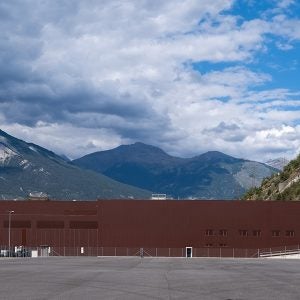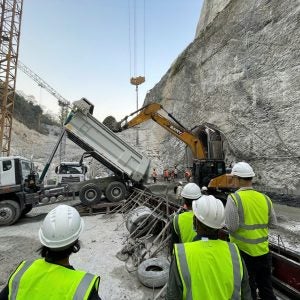In a statement, SSE said the structural failure in the tunnel happened near the top end of the headrace, where it is fed from the reservoir. It added that there had been no equipment damage in the underground powerhouse.
The utility refused to give further information on the ‘hugely disappointing’ problem with the headrace tunnel, except to note that investigations were underway.
Glendoe has more than 16km of tunnels, excavated by two methods – using a 5m diameter tunnel boring machine (TBM) and, for the majority, drill and blast.
TBM excavation of the 6.2km long headrace tunnel was completed in January 2008, linking the powerhouse to the reservoir area. However, it is unclear if the rockfall in the tunnel happened in a section bored by TBM or in any adjoining section driven by drill and blast.
Geology along the alignments comprises hard rock – schist and quartzite, with minor faults. Lining support comprised bolts, steel ribs, mesh and shotcrete as required.
In the catchment above the reservoir site a series of drill and blast drives were undertaken for a 6.9km long aqueduct tunnel, and the excavation work was completed in Spring 2008.
First power was generated at the 100MW plant, near Fort Augustus, at the end of last year. It is the UK’s biggest conventional hydro plant built in a half a century.
The project was constructed under a design and build contract by Hochtief Glendoe JV, which is led by German contractor Hochtief and include Poyry as the designer. The client’s adviser is Jacobs.






